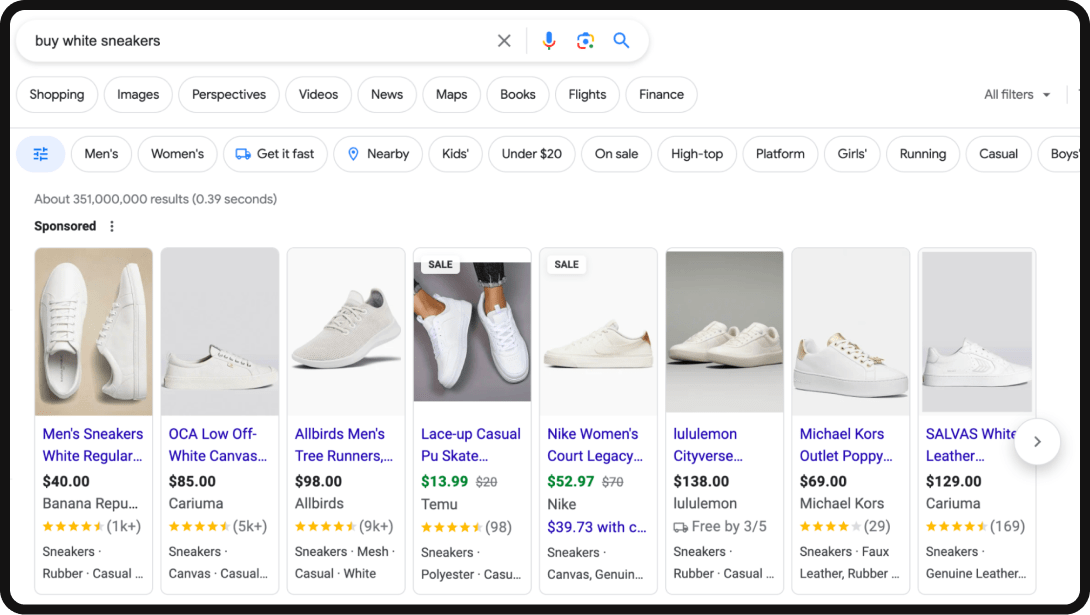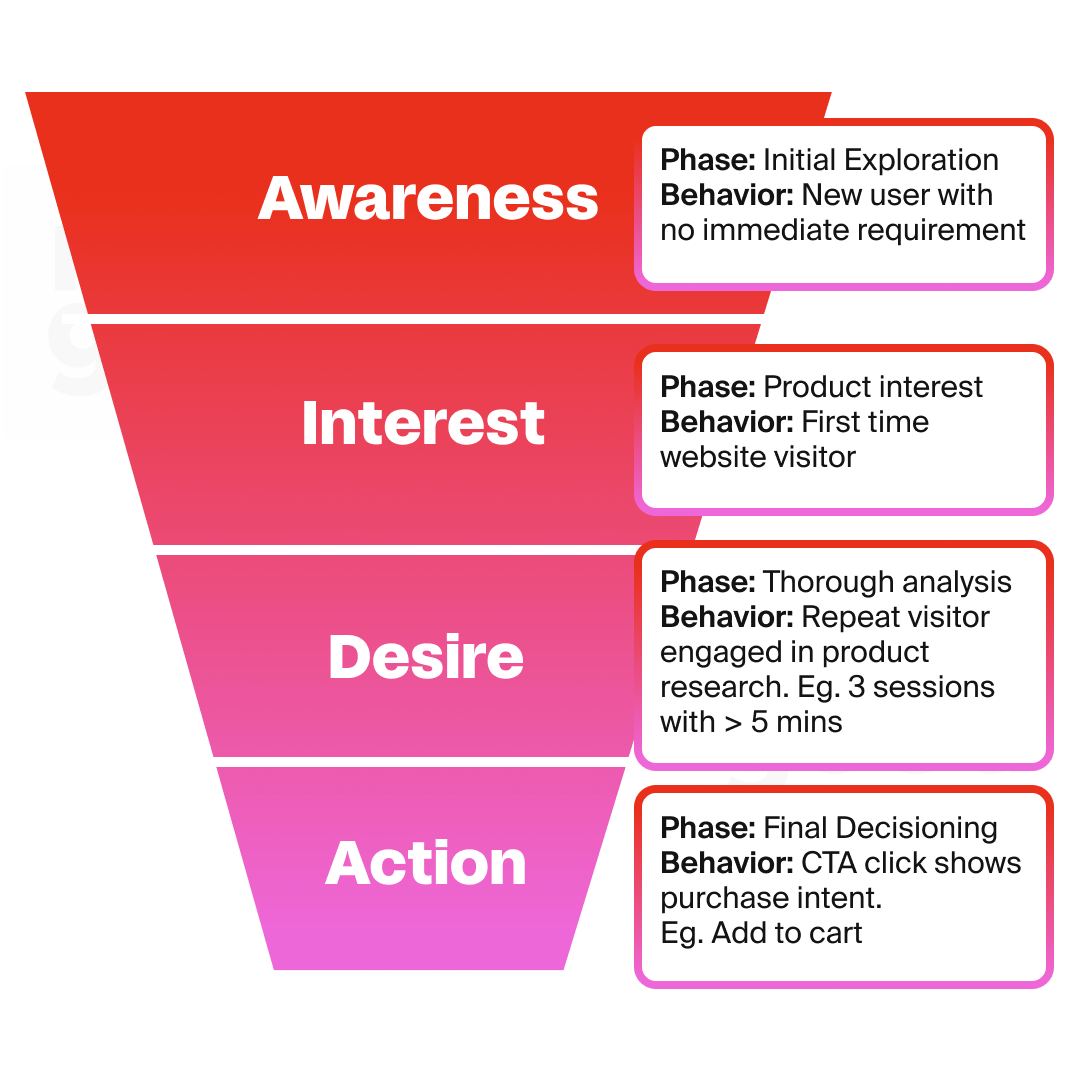In the ever-evolving digital landscape, where consumers are bombarded with countless advertisements every day, the quest for marketers to stand out has never been more challenging. As per one of the studies by the University of Southern California, a user gets to see an average of 5,000 ads per day. How many do you think would they remember?
Enters contextual marketing, a strategy that is known for its ability to offer relevant content to the right audience at the perfect moment. In this comprehensive blog post, we will dive into the benefits of contextual marketing, common challenges faced by marketers with contextual marketing and how to overcome those and useful tips to execute an effective and successful contextual marketing strategy.
What is Contextual Marketing?
Harvard Business Review published a magazine in 2000, and this is how they explained contextual marketing. The article reads, “Instead of trying to create destinations that people will come to, they need to use the power and reach of the Internet to deliver tailored messages and information to customers at the point of need.“
They need to become what we call contextual marketers.” This definition still holds. In other words, “it’s delivering the right piece of communication using the right medium to the right user at the right time in their purchase journey.” And if you get enough things done right, you have a perfectly executed contextual marketing campaign. Here’s a classic example of contextual ads.
For example, if a user is reading an article about the best credit cards for travel rewards, contextual ads may promote a travel credit card ad. Or, webmail ads could target users actively engaging with email platforms. The relevance works to grab attention when consumer interest peaks to turn their intent into conversions.
Here’s a classic example of contextual advertising:

Benefits of Contextual Marketing
- Enhanced relevance: Relevant ads and content that are not intrusive and aligned with the interests and needs of the users help in getting higher engagement or better click-through rates than the traditional targeting methods.
- Building long-term relationships: Contextual marketing fosters genuine connections between a brand and a customer as the communication is based on the customer’s current needs and interests, which eventually leads to lasting loyalty.
- Cost-effectiveness: Targeting based on context can be more cost-effective than other traditional methods.
- Better ROI: By focusing on meaningful engagement, contextual ads help in delivering measurable return on investment.
Common Challenges with Contextual Marketing
1. Limited Data
For years, 3rd party cookies played a crucial role in digital marketing, especially behavioral advertising, like tracking user behavior across websites and enabling highly targeted advertising, but also raised privacy concerns. Deprecation of 3rd party cookies is fundamentally changing the game for marketers.
Mozilla Firefox was the first to stop 3rd party cookies in 2019, followed by Apple’s Safari browser. Now, the industry giant Google Chrome has joined the movement, phasing out third-party cookies by the end of 2024.
To overcome this challenge, ensure you focus on enriching your first-party data through website content, user engagement, and surveys. Leverage user actions and search queries/ search terms on your website to create segments. Also, utilize the customer preferences and purchase history from the CRM system.
2. Scaling Effectively
Utilize automation tools and pre-built contextual segments offered by marketing platforms. Prioritize high-impact channels and audiences for initial campaigns. Utilizing marketing automation tools alongside CRM systems has transitioned from being merely optional to becoming a mandatory practice.
3. Overcoming Ad Fatigue
To combat ad fatigue, marketers can use dynamic content optimization to rotate advertisements and personalize messages based on user interaction history. Not all platforms offer this functionality; in such cases, you can opt to have a “winner vs contender model”.
For example, you run an A/B test with Creative A vs B for 2 months, then at the end of the testing cycle, you can evaluate the performance based on metrics that are relevant for the experiment. You can retain the winner and add a new contender creative for the next testing cycle. The duration of the test can be defined based on various factors like platform, product, conversion cycle, etc. But the model should work for all types of tests.
4. Measuring Success
Go beyond just clicks and impressions. Focus on metrics like level of engagement, time spent, conversions, and downstream sales to measure the true effectiveness of your contextual campaigns. It has been the most demanded feature by digital marketers and yet one of the most difficult when it comes to execution.
Thankfully, there have been advancements in the way last mile measurement can be tracked. Well, it might not be possible, especially for brands and products where the life cycle of the product is longer. In such cases, it’s best to start with an alternative metric that aligns with the marketing objective and can be measured in the short term while you keep inching closer toward sharper metrics.
Tips for Executing a Successful Contextual Marketing Strategy
1. Structure Campaigns by Buying Stages
Go beyond generic top-of-funnel targeting with a customer journey viewpoint. Use the AIDA model to reach interested users at multiple touchpoints

2. Embrace Contextual Advertising Platforms
Partner with platforms that offer contextual ad networks, enabling you to display your ads on websites and apps aligned with your target audience’s interests and current context. For contextual ads, Google Demand Gen, Taboola, Outbrain, and Quora could be used. This is not the complete list of ad platforms available out there. You should pick the relevant ones that add value to your brand and business objectives.
3. Expand Beyond Paid Channels
Contextual marketing strategies can be done effectively without relying solely on paid campaigns. Here are some examples
CRO and SEO: Interlink relevant content on your website. You should guide the user by sharing relevant internal links or contextual popups that are non-intrusive and offer personalized recommendations based on their interest or previous selections on the website. This activity should ideally expose customers to relevant product and service pages based on their purchase funnel.
Content Marketing: Craft content in the form of blog posts, FAQs, product pages, tutorial videos, and testimonials that address current events, industry trends, or common pain points within your target audience. This establishes your expertise and resonates with the customers. With the ever-increasing consumption of video content and social media, it is advisable to create visually appealing infographics or videos that share valuable information in an engaging format.
Email marketing: Email marketing, when combined with contextual data, can be a powerful tool and can deliver personalized messages that resonate deeply and drive action. It has become a common practice to target behavior segments like welcome emails, cart abandoners, and browsing specific products or product categories. However, in addition to these, marketers can also indulge in email conversions by sharing interactive or personalized content.
Examples of Interactive content include:
- Quizzes: recommendations based on their answers,
- Dynamic Polls to gauge user preference and tailor future campaigns.
Examples of personalized content:
- Content related to trending topics
- Promotion of events
- Dynamic product recommendations
- Webinars/Product demo invitations.
Influencer partnerships: Collaborate with influencers or brand advocates who align with your brand values and target audience. Partnering with influencers can help you reach new audiences and build credibility and trust with their followers. This could include sponsored posts, product reviews, tutorials, or behind-the-scenes glimpses that resonate with the influencer’s audience and align with your brand messaging.
4. Experiment and Measure
Like any marketing strategy, continuous testing and analysis are crucial. Experiment with different contextual targeting options, platforms, and creative formats, and measure the impact on key metrics like engagement, conversion rates, and ROI. No one nails it perfectly in their first attempt, but constant monitoring and adjustments will help you find the sweet spot for effective and well-received contextual marketing.
5. Strike the Right Balance
Contextual marketing can be a powerful tool, but when overdone, it can backfire. To achieve scale, it’s a common practice to go overboard by getting in the area of irrelevant ads, intrusive channels, or untimely messages.
Remember the annoyance of the remarketing ads that followed you everywhere or excessive push notifications that eventually made you uninstall an app? Intrusive contextual marketing can create negative experiences. Be mindful of getting the right balance for a winning strategy.
Final Thoughts
With the deprecation of third-party cookies, the need for contextual marketing is at its peak! Contextual marketing offers numerous benefits, such as enhanced relevance, fostering long-term relationships, cost-effectiveness, and better ROI. However, it also presents challenges such as limited data, scaling effectively, overcoming ad fatigue, and measuring success.
To execute a successful contextual marketing strategy, marketers should structure campaigns based on buying stages, embrace contextual advertising platforms, expand beyond paid channels through methods like CRO, SEO, content marketing, email marketing, and influencer partnerships, experiment and measure results, and strike the right balance to avoid intrusive experiences.







